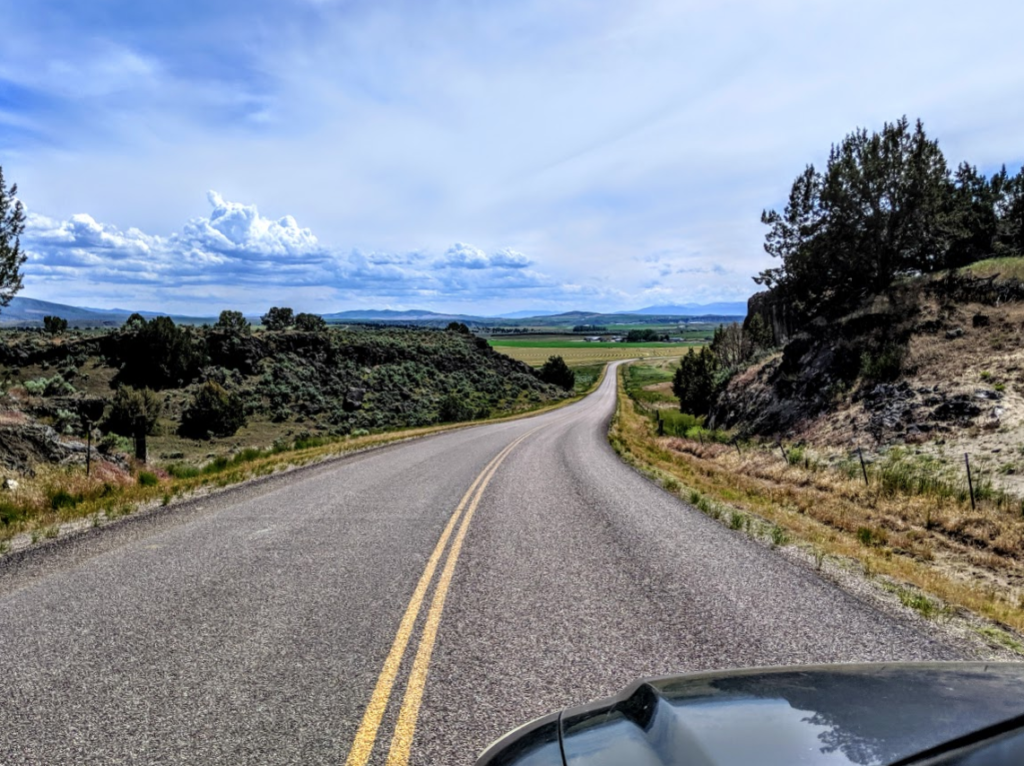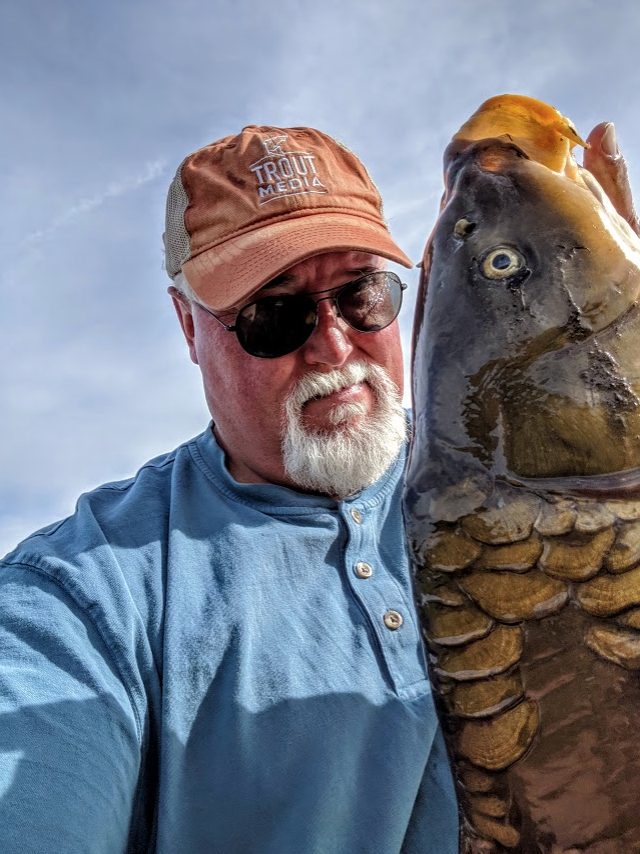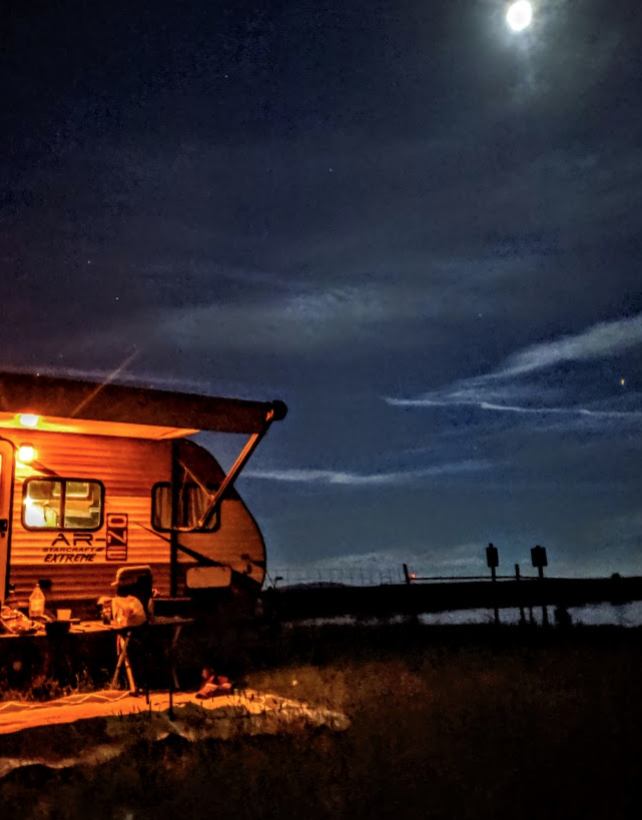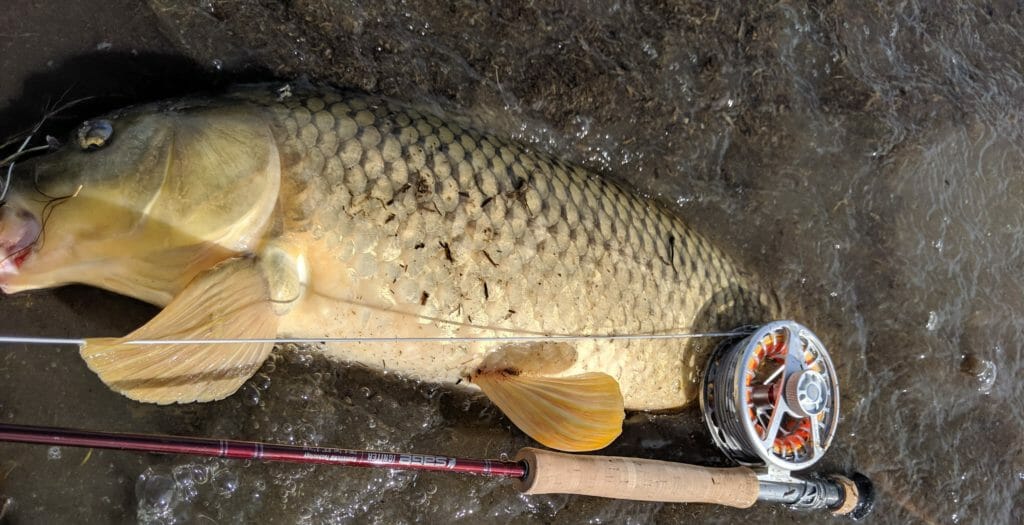We had a great winter here in Idaho. Lots of high snow. And then spring arrived with buckets of rain in the valleys and more snow up high. We’re closing in on the first day of summer, and our backcountry trout streams are still surging with runoff.
High water is a blessing and a curse for fly fishers. We need the water, as we always do. Nobody with any sense turns their noses up at a big winter anymore. Not after the lean snowpack we’ve seen more often than not over the last decade or so.
But high snow in mid- to late June means a late start to backcountry trout season—it means high, roiling creeks that might be clear and fishable by now if we were experiencing a normal year are too flush with meltwater to bother with.
It means we have to get creative. And, this time of year, when the high country is still locked up in what’s left of winter, I like to get creative in the desert.

Idaho’s Snake River Plain is a swath of desert and scabland that slices across the southern third of the Gem State like a giant smiley face. The Snake flows through the middle of it, cutting through basalt canyons with the help of copious volcanic activity and the wear of water against rock for eons. Sweetwater springs gush from the cliffs that hang above the river, providing sustenance for some of the most famous croplands in the world. Sugar beets, wheat, barely and corn spring from the black earth along the Snake. And of course Idaho’s famous potatoes. Lots and lots of potatoes.
Years ago, salmon and steelhead used to bump their noses against the rocks at Shoshone Falls, but those runs are gone, a sacrifice for cheap hydropower. The river across the state, roughly from American Falls in the east to where it meets Oregon and the mighty Salmon in the west, isn’t what it once was, but it’s still a magical stretch of water.
And, if you’re willing to bend your perception of fly fishing, it’s a great destination for some of the strongest game fish on earth.

Carp.
And, yes, for much of the rest of the world, carp are game fish. One only need play a carp on a fly rod a single time to come to understand why Izaac Walton called carp “the queen of rivers” for a reason. Smart. Strong. Wily. Carp can be maddeningly frustrating for anglers. But when they’re on … they’re on. You know when carp fly fishers consider a 6-pound smallmouth bass to be “incidental bycatch” that carp on the fly are tough to beat when it comes to sheer fishability. They’ll test your mettle. They’ll test your gear. They’ll blow your mind with reel-screaming runs, and they’ll make you double-check your backing knot.
And the southern Idaho desert, pocked with ample public lands managed largely by the Department of Interior, either through the BLM or the U.S. Fish and Wildlife Service, is a great place to get your carp on.
And, after a day spent casting to 20-pound fish tailing on mud flats and in shallow backwater bays along the river, a night on the desert can remind you that, no matter how jacked up the river’s biomass might be these days, this is still wild country that’s largely undiscovered by fly fishers and, frankly, just about anyone else who chases fish and game.

The stars on a clear desert night will take your breath away. The song of coyotes coming out of dens to hunt the marmots and the jackrabbits of the sagebrush sea will make the hair on the back or your neck stand up.
And, if you’ve managed to find enough driftwood along the river’s edge for a decent campfire and have poured yourself a cocktail or two, you’ll find yourself singing along with them.
And, just a few feet away, under the stars, the carp frolick in the shallows, continuing the spring spawn, undeterred by your brief efforts to hook a few and admire something so strong and smart that their following the world over is likely unrivaled among anglers.
No, they don’t belong here. Neither do the bass, frankly. But they are here, and they likely always will be—the effort to remove them would cost more money than we could ever muster.

So, like more and more fly fishers are doing, I’ve come to view the carp as a resource—a remedy for a twitchy springtime casting arm.
I fish for carp. On the desert.
And Izaak Walton would love this.



